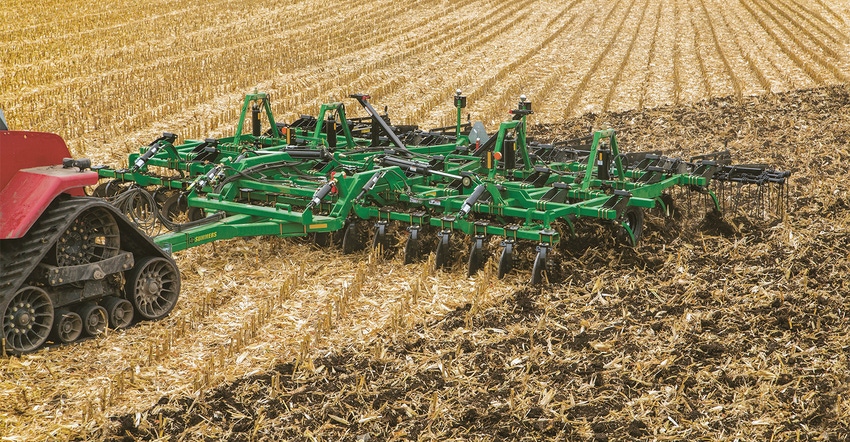
How can you get more out of tillage tools if you’re in conventional tillage? The short answer is that you can make adjustments and complete preseason maintenance before you’re ready to go to the field.
Brian Perkuhn, vice president of sales for Summers Manufacturing, says you may also have to make some adjustments in the field. Here is an exclusive Indiana Prairie Farmer interview with Perkuhn.
Is it important to run tillage equipment level in the fall? A level tillage profile beneath the surface is important to get you set up for spring planting. If fall tillage is level, the planter will operate much better and smoother, [rather] than bouncing over the uneven soil profile beneath the soil surface.
How do you adjust levelness side to side and front to back on most tillage tools? Tillage tools vary on how they’re adjusted. Side to side may be done by adjustment bolts on each hydraulic cylinder or wheel configuration. The front to back may be handled the same way, or it may be with the hitch height. In both cases, look at it in working conditions. Soil conditions may play a part in adjustments, based on if there is a soil compaction layer from heavy rains, saturated soils or harvest traffic.
What wears out fastest on tillage tools? Are there ways to minimize wear and extend life? Usually tillage points or blades wear out initially. The most economical way to minimize wear or extend life is to do tillage when there is adequate moisture, cooler temperatures and reduced speeds.
The alternative is to use tools that have extended-wear coatings or processes. There have been some great processes developed over the past 10 years that are now taking off. There is added cost to these products, but they usually balance out with [less] downtime. There is a cost-savings over time if the tool is to be used for multiple years before replacing.
If there is a compaction layer and you’re chiseling, how do you know if you’re getting under it? Using a penetrometer will tell you if you have a soil compaction layer, as well as how far below the surface it is. Knowing this will allow you to set the tillage depth of the tool just below to take that layer out while being as efficient as possible.
Is it practical to run deep enough to get under a hardpan, or soil compaction layer? In many cases, yes. It depends on how deep the soil compaction layer is and if there is a tool available to you to get under it. There may even be multiple layers of soil compaction. For instance, one may be closer to the surface from heavy rains or harvest traffic, and another may have formed deeper over time from heavy machinery and/or tillage practices.
Is fuel use affected by how a tool is adjusted? Adjustments definitely make a difference on fuel consumption. You only want to go as deep as the soil compaction layer to not waste fuel. You also want to have the machine level. If the machine is going deeper in the front than the rear, tillage points may pull more on the face of the point and not lift the soil to fracture it.
About the Author(s)
You May Also Like




